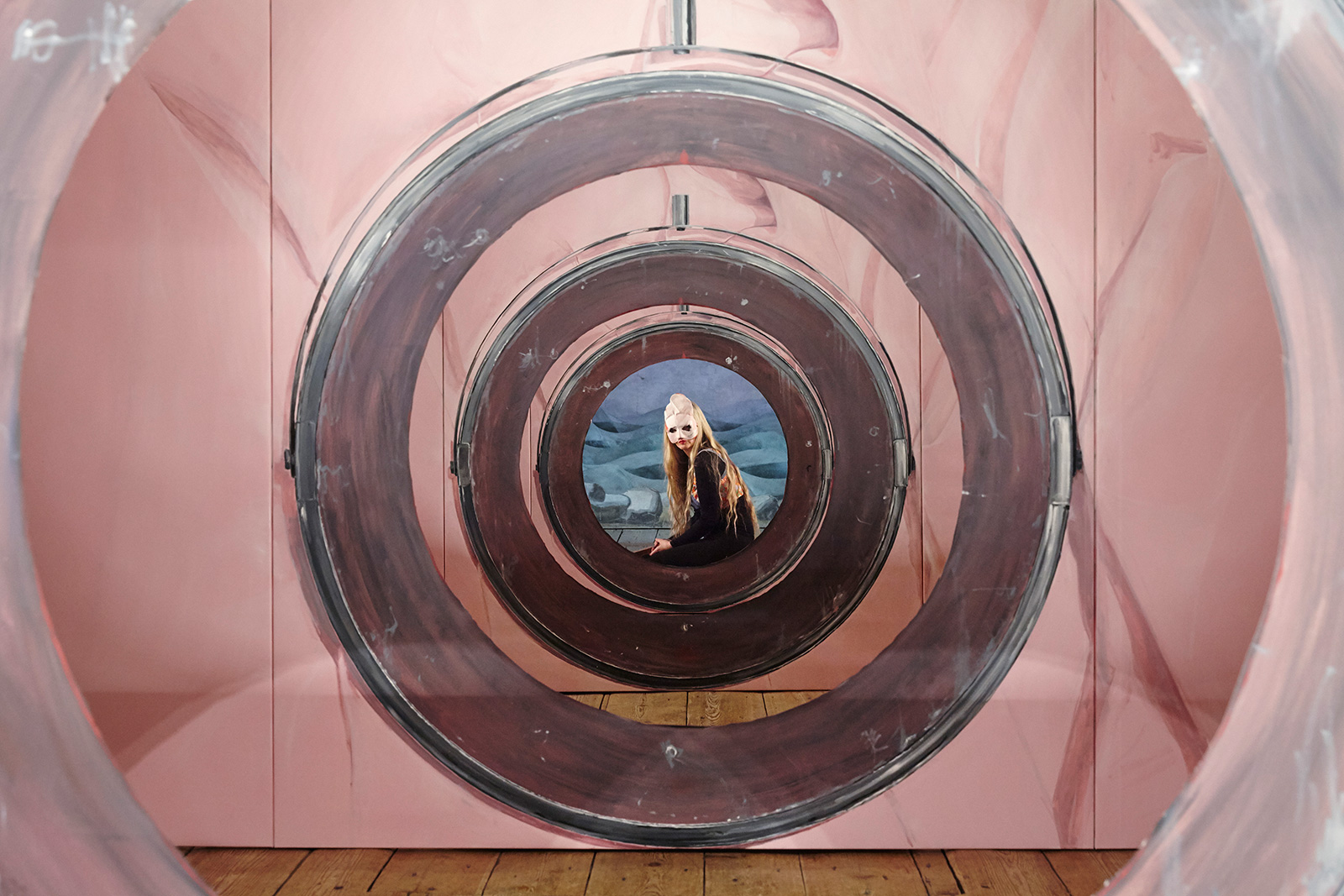The other sex’s own room – Johanna Theander has seen ‘She in four acts’
Bonniers Konsthall is a unique institution in Stockholm’s art life. A space for contemporary art which balances skilfully on the edge of being institutionalised, to joining in the round. Contemporary avantgarde is often presented here, just before the artist has a breakthrough, or maybe never does, this is where great artistry is seen at the centre of international hype. The exhibition currently on display, between 22 April and 26 July is essentially sympathetic to the business and the people running it. Ylva Ogland asks questions such as: Where is the border between art and life? Is there one? Can we ever say anything about someone other than ourselves? Can we understand anyone else? Do we want to know everything about each other? In her review of Ogland’s ‘She in four acts’ Johanna Theander digs deep and finds something acutely private, a positioning of the artist who becomes art and, who due to their extreme subjectivity and self disclosing openness says something about herself, and maybe about all of us.
Maybe this is precisely the intention? That life and art become one. That the big events, the small moments and the artistic production are inseparable in their existence. For Ylva Ogland, it is undeniably so. In ‘She in four acts’ her world plays out in four precisely defined acts; the shadow world, death, birth and the real world. In an installation that is equally as theatrical as it is corporeal, she guides the visitor through the big events that have defined her existence.

We are met with large-scale scenery in every act. We catch a glimpse of a red-toned landscape through a cut-out mirror. It is difficult not to draw direct parallels with Plato’s allegory of the cave. This is Plato’s self-justifying idea that people chained in a cave only perceive shadows of real objects. Ylva Ogland’s scenery becomes an explicit reference to when the philosopher breaks out of the cave to glimpse the world of ideas and then has to endure scorn when he returns to the cave. Her art, like Plato’s allegory of the cave, is also self-justifying. It is from her life, her father’s death and the birth of her children that she paints and takes inspiration. The objects from her childhood are replicated and filled with even more objects that talk about her. This is both narcissistically and excessively relieving. As the big events also contain something general, and through Ylva Ogland’s complete focus on her own experiences we, as viewers, are saved from contemplating our own milestones and decisive occurrences.

The same release, the same sense of the general and the deeply specific also occurs in Ylva Ogland’s confirmation of the works in the exhibition as art. Their status as objets d’art is manifested in their ongoing production. Ylva Ogland is at the exhibition every single day. She paints in the shadow studio every day, wearing a mask. She paints a picture of the exhibition, but also shadow versions of the landscape we come across in the exhibition. She paints thick layers of meta perspective where the work of art, in its ongoing production, makes the viewer even more a part of the exhibition and its subject. Life and death, birth and the shadow world come even closer through our participation in their creation process. The status of the work of art as a subject, its expressed existence as a painting, is further strengthened by the form and presentation of the exhibition. Födelsen (The birth) is a series repeating the same subject, Ylva Ogland on her knees, holding her newborn daughter in her arms. Mother and daughter are still connected by the umbilical cord, and this subject, this symbol of the start of life but also a deeply personal experience is lined up on canvas after canvas in a closed rectangle. Within this space, the paintings face one another, rather than the viewer. We find ourselves on the outside, we get a glimpse between the easels of this intimate moment, while its general content hits us with surprising force.
Within this space, the paintings face one another, rather than the viewer.
The repetitions that we see in several of the works in the exhibition can also be linked to Ylva Ogland’s partiality for recurring subjects. The mirror recurs in several of her previous works, including Oraklet (the Oracle) that watches over her husband’s gallery. Snöfrid, her mirror twin, who is constantly present and fights to take physical form, is also present in this exhibition. By repeating subjects in this way, she creates the feeling of a course of events. The repetitions also function as a ritual, as an adaptation, a notation of decisive moments. This repetitive, this unbroken, almost manic repetition contributes to the production of a personal mythology. This decisive moment, which is repeated on canvas after canvas feels almost like an incantation. As though Ylva Ogland is using this incantation to conjure, just what exactly? Her father’s death, a traumatic memory, but her father was also a significant part of both her life and art. Her daughter’s birth, at home, a happy but also painful experience. This ambivalence in what is essentially being said, what Ylva Ogland wants to conjure with her rituals and incantations, makes the exhibition open to interpretation, precisely like life.
The exhibition ‘She in four acts’ is open until 26 July at Bonniers Konsthall in Stockholm.
